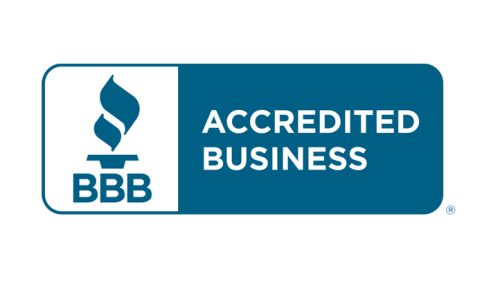How to Reduce Claim Denials in Medical Billing: Expert Tips That Work

Reduce claim denials in medical billing by following effective strategies for reducing billing errors. Proper verification of patients’ data, correct codes, and on-time claim submissions can minimise the denied bill ratio. Denied claims pose a significant challenge for healthcare facilities in maintaining a stable revenue stream. Denial bills decrease the revenues, raise management expenses, and make the practice suffer a lot. However, healthcare providers can reduce the claim denials by taking a proactive approach and knowing accurate codes for each bill.
This blog will guide you How to Reduce Claim Denials in Medical Billing with Expert Tips That Work. It will help you improve your revenue cycle management.
Understanding Claim Denials in Medical Billing
It’s crucial to know the difference between a medical billing claim rejection and a denial. A claim gets ignored when an insurance company doesn’t pay it because of mistakes, missing information, or policy violations.
- Rejected Claims: These are claims with issues that restrict reimbursement. You can fix the errors and again post them for processing. These payments may additionally include flaws like incorrect formatting or missing statistics.
- Denied Claims: These are the claims that can be processed but are considered unpaid. For such payments, you have an obligation to provide additional documentation if required.
The American Medical Association (AMA) argues that denial rates for healthcare professionals can be as low as 5% or as high as 10%, and many of them are preventable.
Common Claim Denial Reasons
Following are the common reasons that generally affect the claim clearance.
- Incomplete or Inaccurate Patient Information
Simple mistakes like spelling names improperly, giving the wrong date of birth, or using an old insurance policy number can lead to denials. Checking patient information at check-in and before filing a claim is highly critical.
- Inaccurate and Outdated Coding
You can face automatic medical billing claim rejection if you utilise the wrong CPT, ICD-10, or HCPCS codes, or outdated codes. People often make coding mistakes when they don’t have enough knowledge about the codes and use old or outdated resources to obtain coding instruction.
- Missing Prior Authorization
A majority of insurance companies require certain services for prior approval. You might not get reimbursed for it if you don’t get it before treatment, even if it’s medically necessary.
- Untimely Filling
Every insurance company has its own deadlines for reporting claims. If you miss these dates, even by a few days, your claims could be turned down without providing you an opportunity to fix them.
- Patients Eligibility Issues
If the patient’s insurance isn’t up to date or doesn’t cover the service, the claim will be denied. This happens a lot with Medicaid or marketplace plans that alter a lot.
- Insufficient documentation
Some services require a lot of clinical data to prove that they are medically required. A lot of the time, missing or unclear paperwork leads to rejections.
How to Reduce Claim Denials in Medical Billing: Expert Tips That Work
There are many proven claim denial prevention tips to reduce or even avoid them. Therefore, by following those billing error reduction strategies, you can save a lot of time and increase your running cash flow.
- Verify Insurance Eligibility Before Every Visit
Don’t assume that a patient’s insurance hasn’t changed. Before services are given, use real-time eligibility verification tools to check that you know all the specifics of their coverage, such as co-pays, deductibles, and the state of the network.
- Implement Comprehensive Coding Audits
Do regular coding audits, either inside the company or with a third party, to uncover faults that keep happening and teach your employees how to solve them. Correct coding not only lowers the number of medical billing claim rejections, but it also makes sure that you follow the rules imposed by payers.
- Invest in Staff Training and Certification
Billing and coding workers should continually receive new certifications, like AAPC or AHIMA credentials, to stay up to date on the rules and standards that relate to each customer.
- Use Technology for Pre-Submission Scrubbing
Before claims are turned in, software that scrubs claims checks for missing information, codes that don’t match, and formatting issues. This makes it much less likely that you will be turned down.
- Track Denials by Payer and Service Type
Keep a record of all the claims that were denied, together with the name of the insurer, the type of claim, and the reason for the denial. This helps practices see patterns and alter how they bill to fit the demands of payers.
- Streamline Prior Authorization Processes
Use automated technologies or dedicated workers to handle previous authorisations. Use a plan to keep track of all the conversations you have with payers and make sure you have all you need before you send in claims.
- Submit Claims Within Required Timeframes
To make sure that due dates are met, set up an organized way to submit claims. Set reminders and use billing software with calendar notifications to make sure you file on time.
Best Practices for Denial Management
The following are best practices to manage the denials effectively and efficiently.
- Establish a Denial Management Workflow
Follow up in a consistent, step-by-step manner to deal with denials, from putting them into the system to fixing them. Give each team member a definite job to do so that they are responsible.
- Categorize and Analyze Denials in Real-Time
Once a week or once a month, record why and how often denials arise. You can see mistakes in the process, differences between payers, and gaps in training when you look at these numbers.
- Maintain an Appeals Library
Make templates and samples of documentation for common requests that are denied. Having letters and other paperwork ready to go speeds up the process of reviewing claims.
- Educate Clinical Staff on Documentation
Incomplete professional notes are a common reason for denials. Make sure that service providers know how much information you need to do your jobs, especially for services that are pricey or hard to understand.
- Schedule Monthly Denial Review Meetings
Get the billing, administrative, and clinical teams together on a regular basis to discuss complex situations, look at patterns in denials, and come up with methods to address them.
How Can Technology Help Reduce Claim Denials in Medical Billing?
Technology can help significantly in cases of denied claims and revenue management.
Claim scrubbing tools check for errors, such as missing regions or invalid codes, before the claim is put in. This makes the claim more accurate.
AI and RPA systems can conduct repetitive invoicing tasks like checking eligibility and updating claim status on their own. This lets staff work on instances that are more difficult.
Billing dashboards can help you find out about denial rates and days in accounts receivable and improve the approval rates for insurance claims. Seeing data from a different perspective can help you uncover problems and methods to fix them.
Patient portals and EHR integration cut down on mistakes by making sure that payment systems get the correct information about patients and their insurance right away.
When to Outsource Medical Billing for Denial Management?
Many practices spend a lot of time and money dealing with denials in private. Outsourcing can be a smart option when the following factors are true:
When you need to hire someone else:
- The number of denials is increasing.
- Staff doesn’t have enough time or knowledge
- Late reimbursements hurt cash flow.
Benefits of Outsourcing Denial Management to Credex Healthcare
Outsourcing your medical billing to Credex Healthcare can minimise or nullify your denial rates due to the following reasons.
- Specialised Knowledge: You can get help from a team of committed denial management experts who know the rules and regulations that apply to each payer.
- Faster Claim Resolution: Appeals and resubmissions are handled more quickly, which means fewer disruptions to cash flow.
- Advanced Analytics: Insights based on data to find root reasons and recurring denial patterns that will lead to long-term progress.
- Reduced Administrative Burden: Less work for the people who work for you, so they can focus on caring for patients and other important tasks.
- Higher Reimbursement Rates: Tried-and-true ways to get more money back from claims that were originally denied.
- Custom Reporting: Dashboards and records that are easy to understand and make sure you know about progress and return on investment (ROI).
- Cost-effective: You won’t have to pay to hire, train, and keep a rejection management team.
- Regulatory Compliance: Makes sure that all requests and follow-ups follow HIPAA and payer rules.
Final Thoughts
Delayed and denied claims are bad for both practitioners and for their effects on patients’ satisfaction. It decreases the cash flow. Practices can cut down on denials by a lot and speed up their cash inflow cycle by knowing about the most typical reasons for rejection or delays. When you follow tips for preventing claim denials and take proactive efforts, you can reduce common claim denial reasons in medical billing.
FAQs
Q: What are the top reasons claims get denied?
Some common reasons are giving the wrong patient information, making mistakes while coding, not having the correct authorisations from the past, not being eligible, and filing too late.
Q: How can technology help reduce billing errors?
Some of the technologies that help discover issues before claims are sent in and maintain track of their progress more quickly are AI automation, real-time qualifying tools, and claim scrubbers.
Q: Is outsourcing denial management cost-effective?
Yes, it does make things easier by cutting down on paperwork, speeding up reimbursements, and sometimes being cheaper than hiring additional people.
Q: How quickly should denied claims be appealed?
Most payers suggest you should appeal within 7 to 30 days of getting the notice saying you were denied. The odds of a successful resolution go up when you respond fast.



















